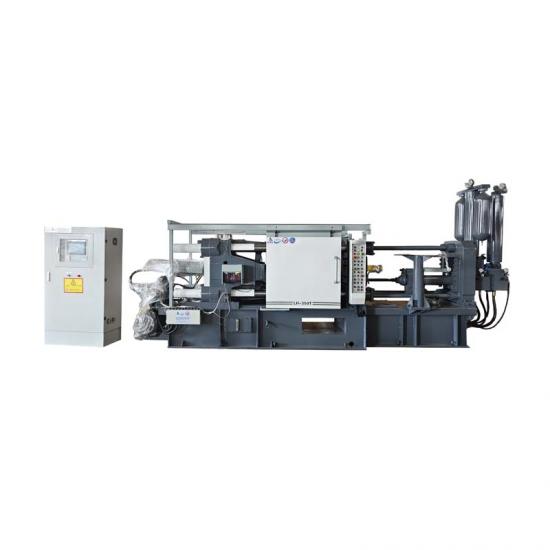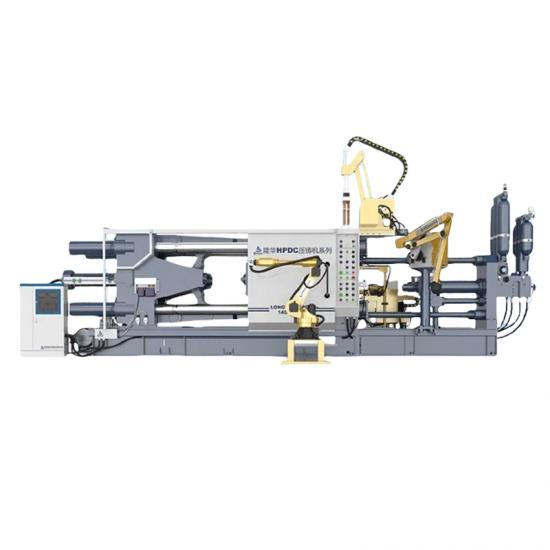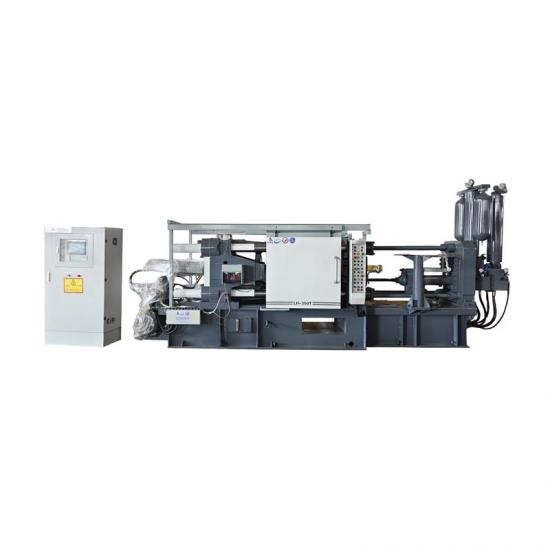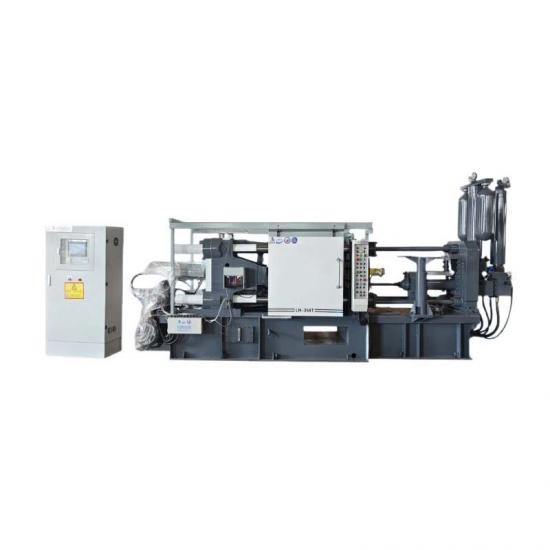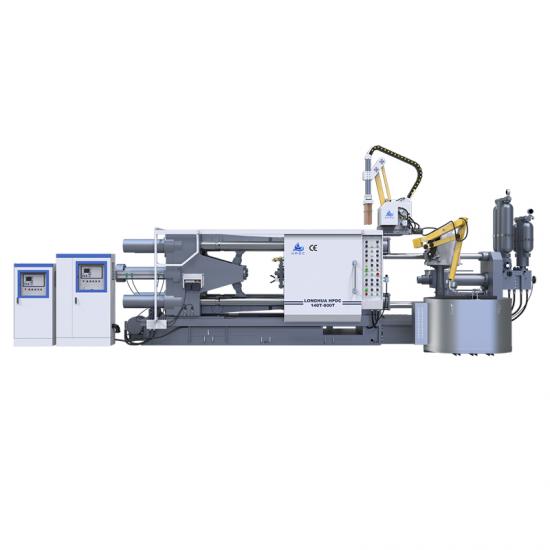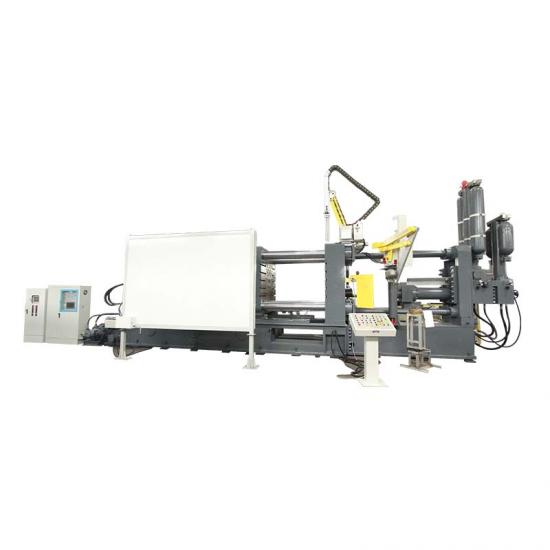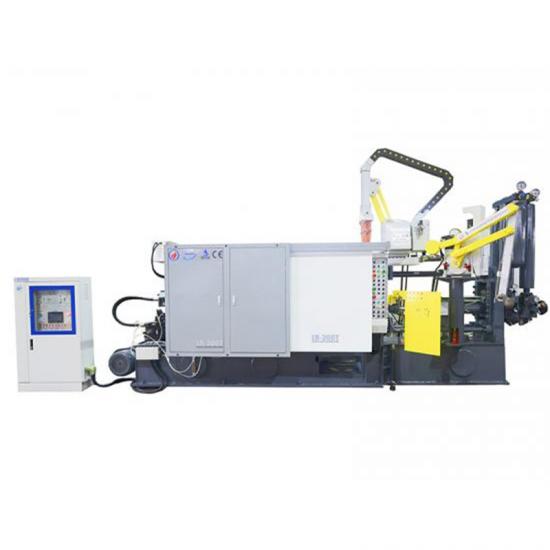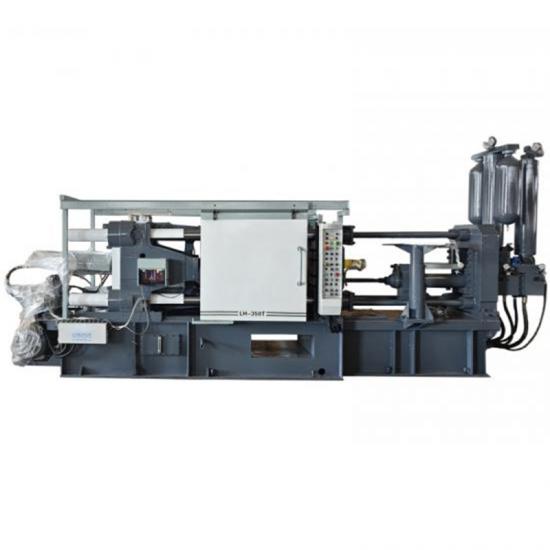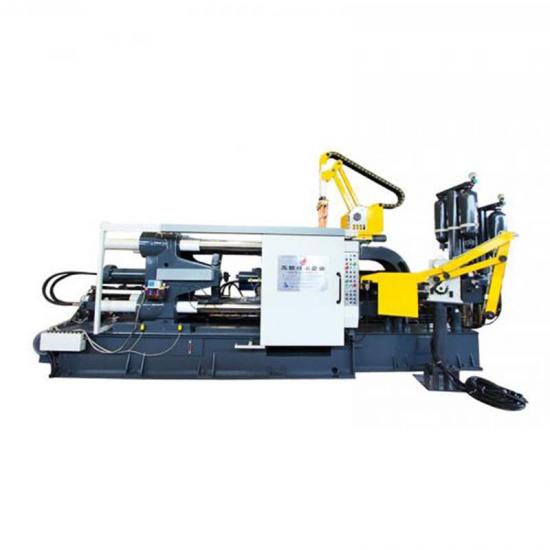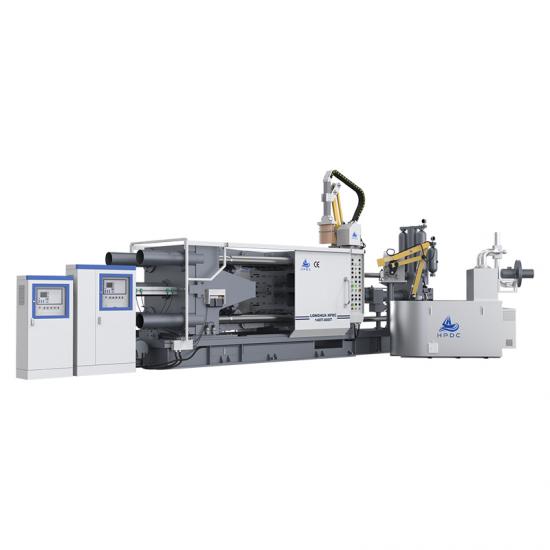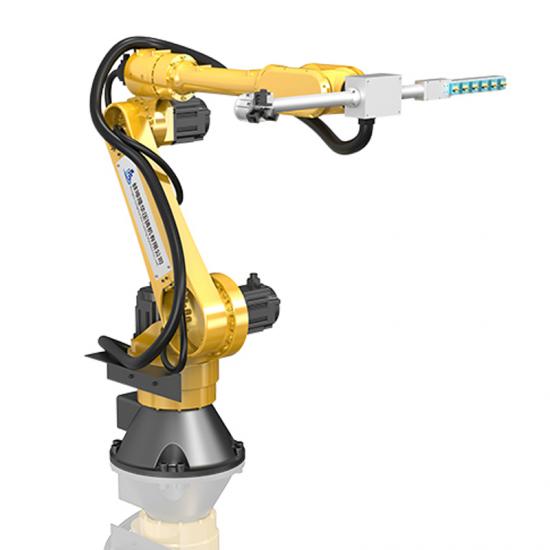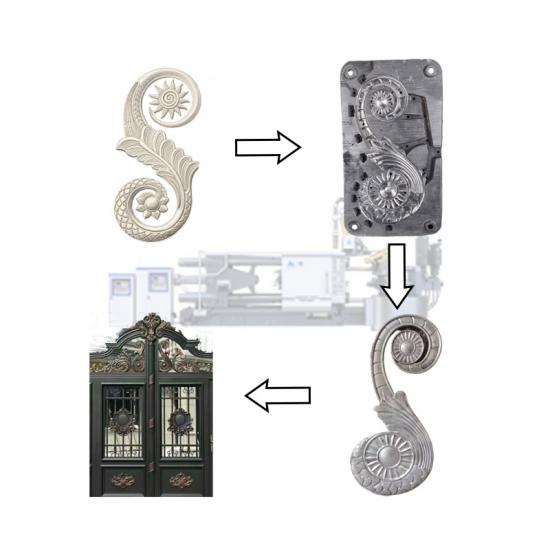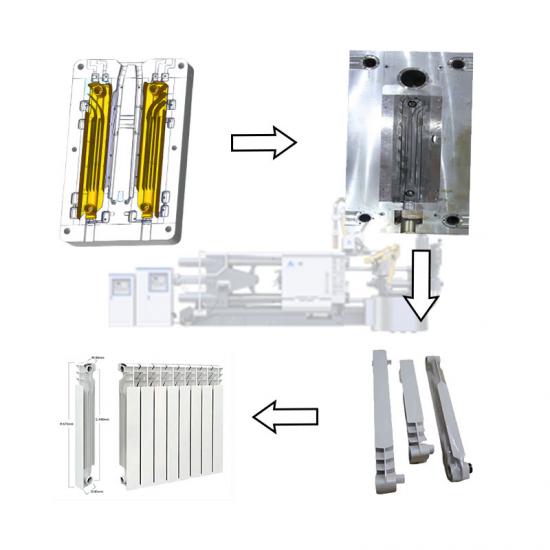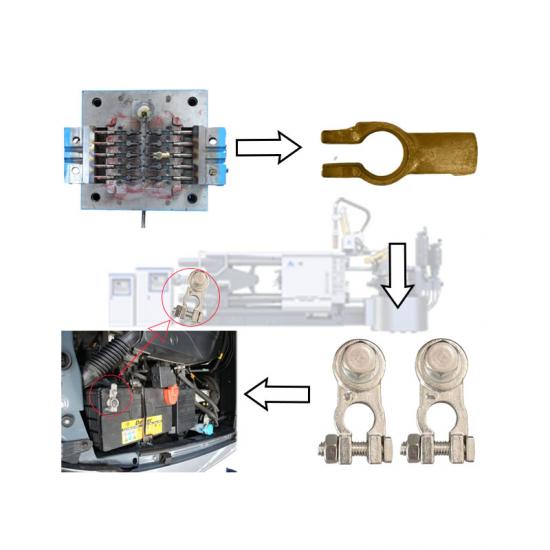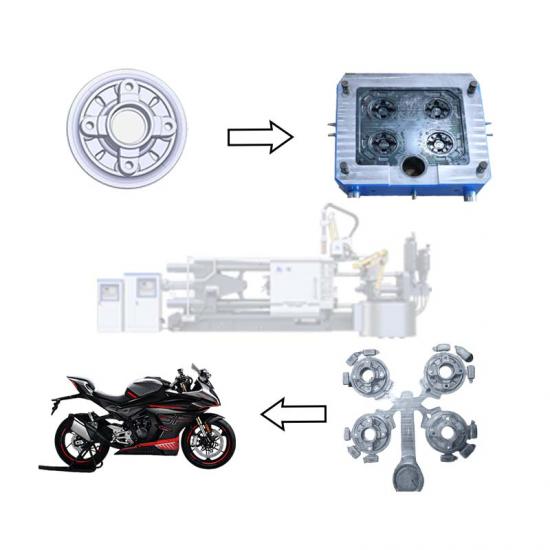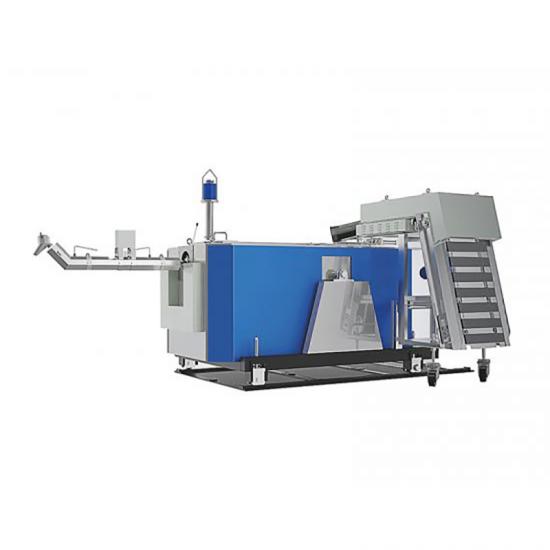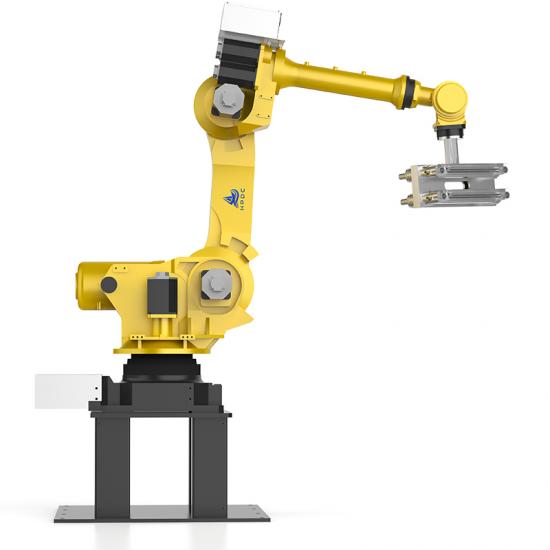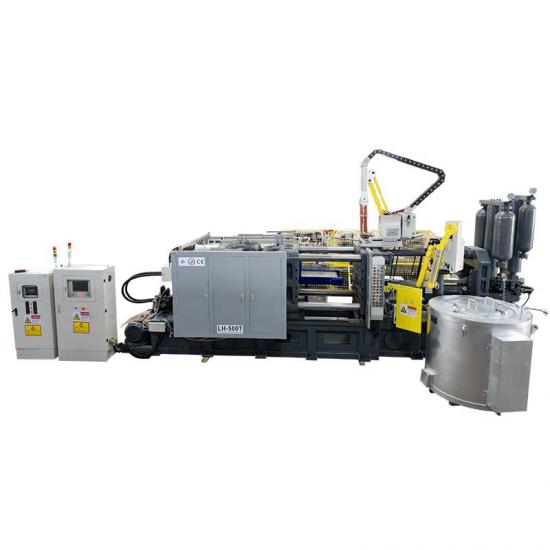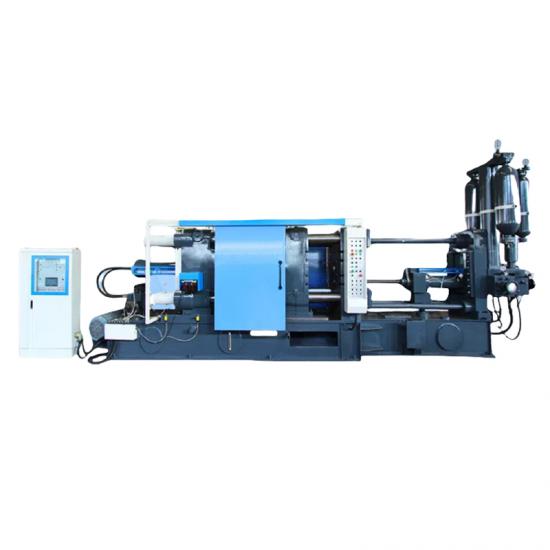
Features of brake pad die-casting machine:
1. High-precision processing: Brake pads have high requirements for size and shape accuracy, so the brake
pad die-casting machine has high-precision processing capabilities to ensure that the size, shape and surface
quality of the brake pads meet standard requirements.
2. High strength requirements: Brake pads need to withstand large friction and pressure during automobile
braking. Therefore, the brake pad die-casting machine needs to have sufficient die-casting capabilities to
produce brake pads with good strength and wear resistance.
3. High-efficiency production: Brake pads are an important part of automobile safety performance, so
production efficiency is crucial to manufacturers. The brake pad die-casting machine has high-efficiency
production capacity and can produce large quantities of brake pads quickly and stably.
4. Diversified materials: Brake pads can be made of different materials, such as semi-metallic, organic
materials, etc. The brake pad die-casting machine needs to be able to adapt to the casting of multiple
materials to meet the production needs of different brake pads.
5. Automated control system: The brake pad die-casting machine is equipped with an advanced automated
control system to achieve fully automatic production, reduce manual intervention, and improve the stability
and consistency of the production line.
6. Quality control: The quality of brake pads is directly related to the driving safety of the car. Therefore,
the brake pad die-casting machine needs to be equipped with a strict quality control system to ensure
that the quality of the brake pads produced is stable and reliable.
7. Energy saving and environmental protection: The brake pad die-casting machine adopts advanced
energy-saving technology to reduce energy consumption and emissions, and meets environmental
protection requirements.
8. Flexibility and adjustability: The brake pad die-casting machine needs to have strong flexibility and
adjustability, and can be adjusted and customized according to the requirements of different brake
pads to meet customer needs.

Specification
| LH series of standard parameter table (630 t) | ||
| ITEMS | Unit | Specification |
| Clamping Force | KN | 6300 |
| Opening stroke | mm | 650 |
| Die thickness(Min--Max) | mm | 350~850 |
| Space between tie bars | mm | 750*750 |
| Ejector stroke | mm | 150 |
| Ejector force | KN | 315 |
| Injection position(0 as center) | mm | 0,-250 |
| Injection force(intensification) | KN | 590 |
| Injection stroke | mm | 600 |
| Plunger diameter | mm | ¢70 ¢80 ¢90 |
| lnjection weight(aluminum) | Kg | 7.2 |
| Casting pressure (intensification) | MPa | 153/117/92 |
| Max. casting area(40Mpa) | CM2 | 1575 |
| Injection plunger penetration | mm | 250 |
| Diameter of pressure chamber flange | mm | 130 |
| Height of pressure chamber flange | mm | 15 |
| Max.working pressure | MPa | 14 |
| Motor power | Kw | 30 |
| Dimensions (L*W*H) | m | 8*2.2*3 |
| Machine lifting reference weight | T | 25 |
| Oil tank capacity | L | 1050 |
will not be changed without notice)

Features of brake pad die castings:
1. High-precision processing: Brake pads have high precision requirements for size and shape. Brake pad
die-casting has high-precision processing capabilities to ensure that the size, shape and surface quality of
the brake pads meet standard requirements.
2. Excellent strength and wear resistance: Brake pads need to withstand large friction and pressure during car
braking. Therefore, brake pad die castings need to have good strength and wear resistance to ensure that the
brake pads last for a long time. Stable job.
3. Complex structure: Brake pad die-casting parts may have complex structures and shapes to meet different
design requirements of the braking system, such as the braking surface of the brake pad, heat sink, etc.
4. Multi-material adaptability: Brake pad die-casting can use different types of metal materials, such as cast iron,
aluminum alloy, etc., to meet the needs of different models and usage environments.
5. Surface treatment: In order to improve the friction performance and corrosion resistance of brake pads,
brake pad die castings may require surface treatment, such as coating, plating, etc.
6. Process requirements: The production of brake pad die-casting requires strict control of every production
process link, including mold design, material selection, casting, cooling, deburring, heat treatment, etc., to
ensure product quality and performance.
7. Cost control: The production of brake pad die-casting parts needs to consider cost control, including
material costs, production process costs, labor costs, etc., to ensure that product prices are competitive.
8. Quality control: The quality of brake pad die-casting parts is directly related to the safety of car driving.
Therefore, a strict quality control system needs to be established to ensure that the produced brake
pads meet relevant standards and requirements.
ABOUT US
Bengbu Longhua Die Casting Machine Co.,Lid is a company based in Bengbu City,Anhui Province,
China.It specializes in the manufacturing of die casting machines and related equipment.
Established in 1982,Longhua Die Casting Machine Co.,Ltd has been involved in the die casting
industry for several decades.The company focuses on research,development,production,and
sales of various types of die casting machines.The company's product range covers cold chamber
die-casting machines,die-casting manipulators,industrial robots and peripheral equipment of
die-casting machines to meet the needs of different customers.













